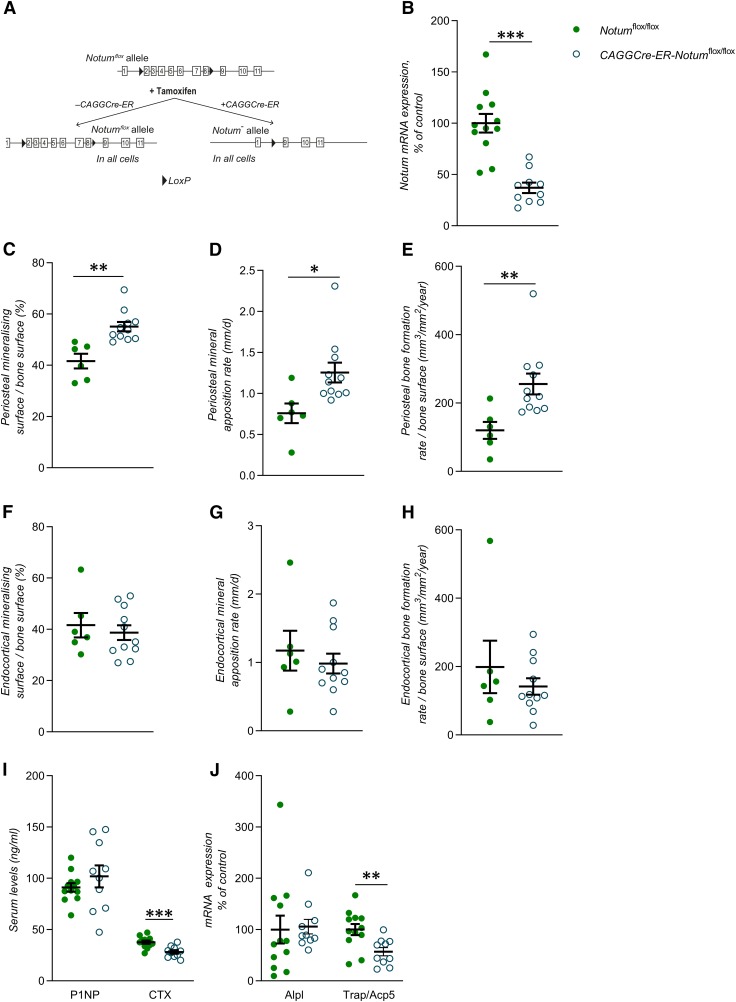Figure 4.
Inducible inactivation of the Notum gene increases cortical periosteal bone formation. A) Schematic drawing of the inducible Notum inactivation model. B) mRNA expression analyses of Notum in cortical bone in CAGGCre-ER-Notumflox/flox mice (22-wk-old male mice, n = 10) and Notumflox/flox mice (n = 12). C–E) Mineralizing surface per bone surface (C), mineral apposition rate (D), and bone formation rate per bone surface (E) on the periosteal side of tibia as measured by histomorphometry in CAGGCre-ER-Notumflox/flox mice (15-wk-old female mice, n = 11) and Notumflox/flox mice (n = 6). F–H) Mineralizing surface per bone surface (F), mineral apposition rate (G), and bone formation rate per bone surface (H) on the endocortical side of tibia as measured by histomorphometry in CAGGCre-ER-Notumflox/flox mice (15-wk-old female mice, n = 11) and Notumflox/flox mice (n = 6). I) Levels of procollagen type I N-terminal propeptide (P1NP, left) and (CTX) fragments (right) measured in serum in CAGGCre-ER-Notumflox/flox mice (22-wk-old male mice, n = 12) and Notumflox/flox mice (n = 10). J) mRNA expression analyses of ALP (Alpl, left) and TRAP (Trap/Acp5, right) in cortical bone of CAGGCre-ER-Notumflox/flox mice (22-wk-old male mice, n = 10) and Notumflox/flox mice (n = 12). All values are given as means ± sem. *P < 0.05, **P < 0.01, ***P < 0.001 vs. Notumflox/flox mice (Student’s t test).

